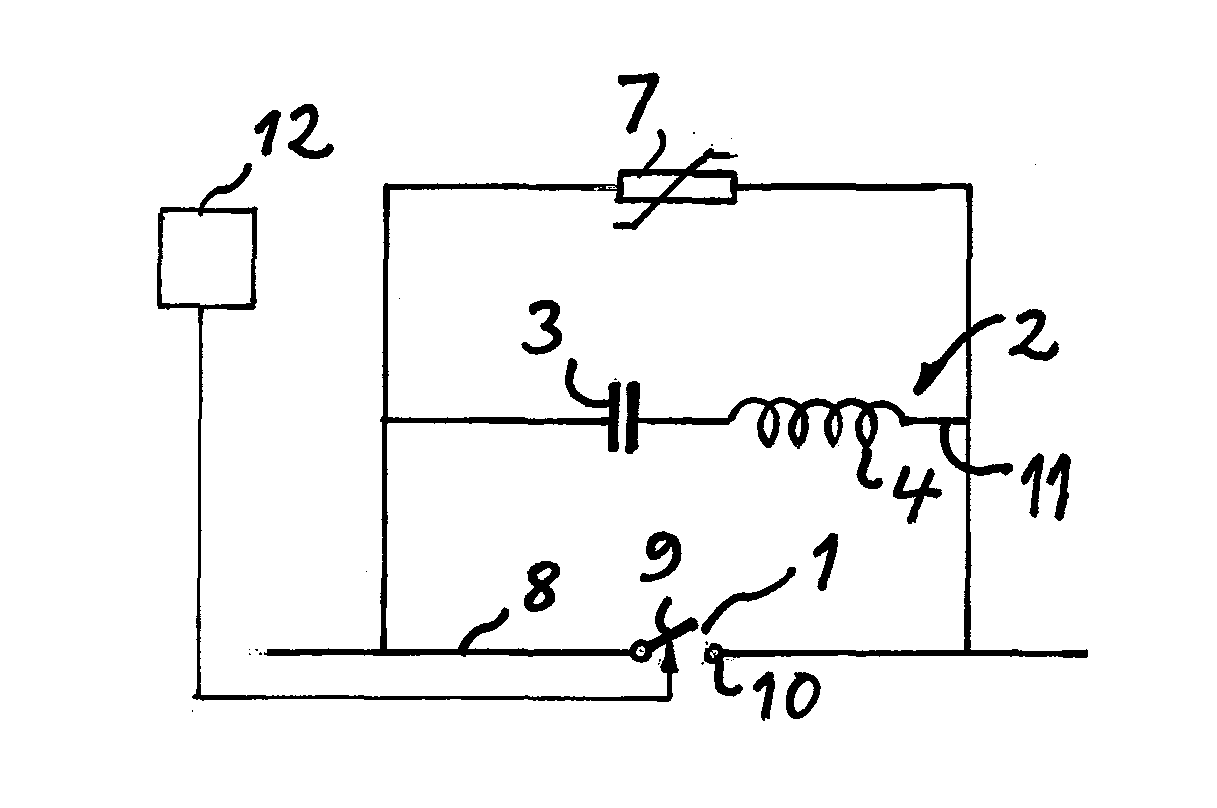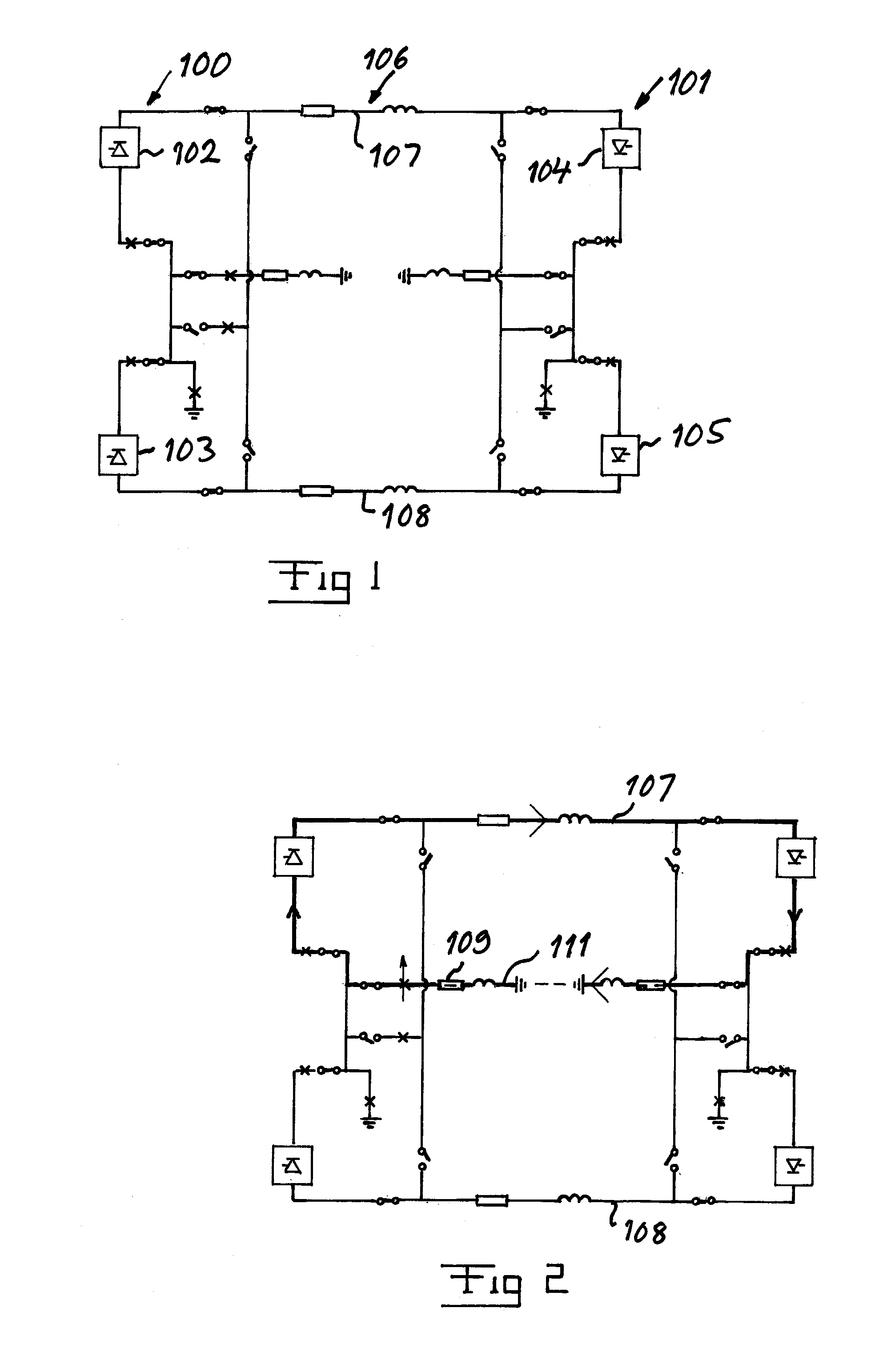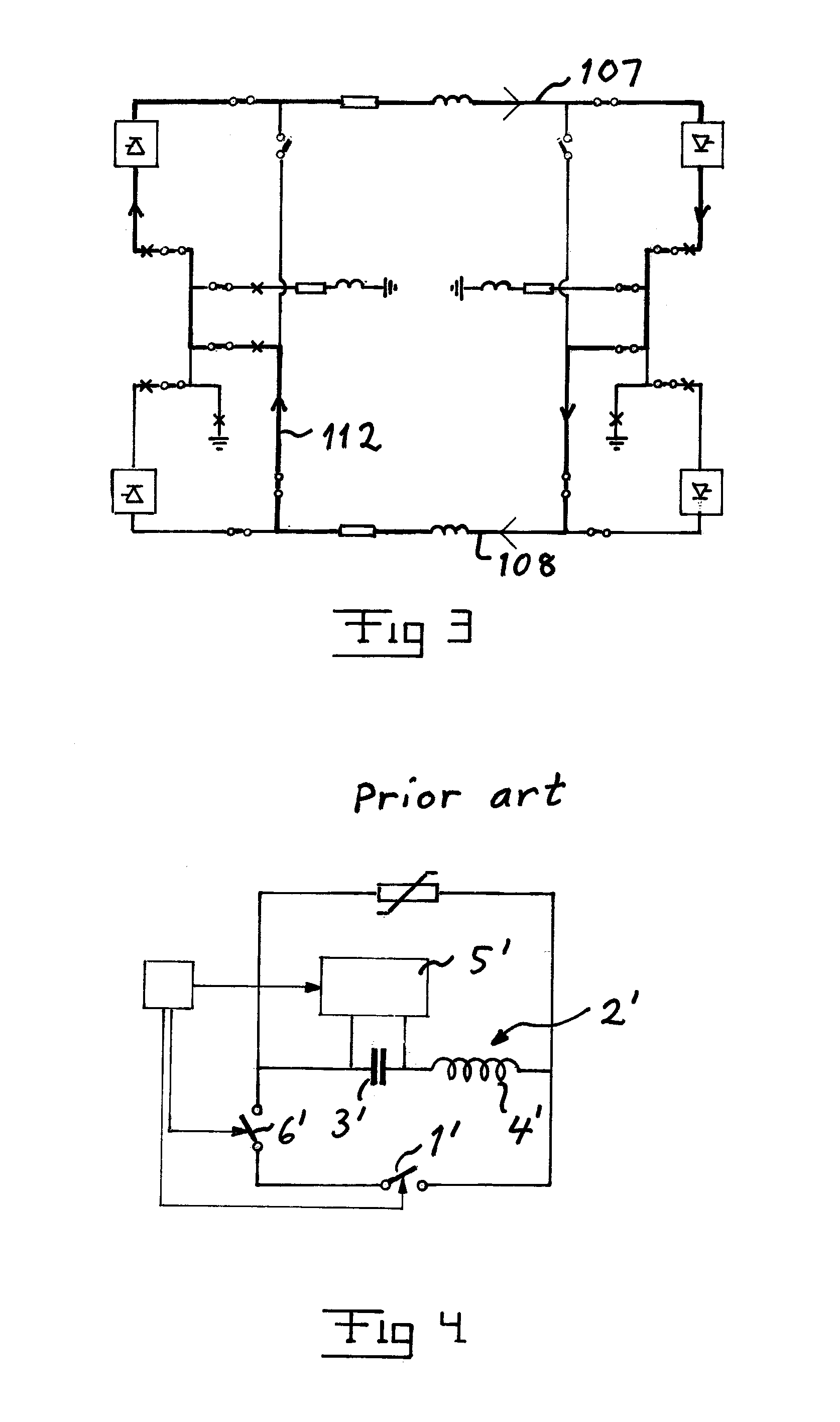DC current breaker
- Summary
- Abstract
- Description
- Claims
- Application Information
AI Technical Summary
Benefits of technology
Problems solved by technology
Method used
Image
Examples
first embodiment
[0035]FIG. 5 illustrates a device according to the present invention comprising one single interrupter 1 to be arranged in a first current path 8 and having contacts 9, 10 movable with respect to each other from a closing to an opening position of the interrupter for breaking a current flowing therethrough. The device has also a resonance circuit 2 connected in parallel with the interrupter and comprising a capacitor 3 and an inductance 4 formed solely by the self inductance of a conductor 11 used to connect the capacitor in parallel with the interrupter. The series connection of the capacitor and the inductance is configured to create an oscillating current superimposed on a DC current through the interrupter for breaking at zero-crossing of the current through the interrupter enabling breaking of this current when the contacts 9, 10 are moved apart. The device has also a surge arrester 7 connected in parallel with the resonance circuit and configured to start to conduct when the v...
second embodiment
[0038]FIG. 6 illustrates a device according to the invention differing from the embodiment shown in FIG. 5 only by the arrangement of two interrupters 1a, 1b in series. This series connection shall be understood as a series connection of two arcs formed upon separation of two couples of contacts when breaking a current. Thus, it may be a question of two separate interrupters connected in series or an interrupter having two chambers with contacts connected in series. This embodiment results in a higher arc voltage, a higher probability to create a voltage step that initiates the current oscillation and gives an increased withstand capability during the transient recovery phase with respect to the embodiment shown in FIG. 5. Series connection of the complete unit can also be possible as well as the series connection shown in FIG. 6.
third embodiment
[0039]a device according to the present invention is shown in FIG. 7, and this differs from the embodiment shown in FIG. 5 by the fact that the resonance circuit comprises a switch 6 connected in series with the capacitor and the inductance and configured to be open when the interrupter is in a closed conducting state. The control means 12 is adapted to control the switch 6 to close and by that to close the resonance circuit with a delay, such as 15 ms after, with respect to a contact separation during an opening of the interrupter. This makes it possible to create a rather well defined voltage step that initiates the current oscillation in the resonance circuit. It is pointed out that the embodiment shown in FIG. 7 may of course have more than one interrupter or arcs created upon opening connected in series.
[0040]The sequence of breaking a DC current flowing in a first current path through an interrupter in a device according to the present invention and transferring this DC curren...
PUM
| Property | Measurement | Unit |
|---|---|---|
| Electrical inductance | aaaaa | aaaaa |
| Electrical inductance | aaaaa | aaaaa |
| Electrical inductance | aaaaa | aaaaa |
Abstract
Description
Claims
Application Information
 Login to View More
Login to View More - R&D
- Intellectual Property
- Life Sciences
- Materials
- Tech Scout
- Unparalleled Data Quality
- Higher Quality Content
- 60% Fewer Hallucinations
Browse by: Latest US Patents, China's latest patents, Technical Efficacy Thesaurus, Application Domain, Technology Topic, Popular Technical Reports.
© 2025 PatSnap. All rights reserved.Legal|Privacy policy|Modern Slavery Act Transparency Statement|Sitemap|About US| Contact US: help@patsnap.com



